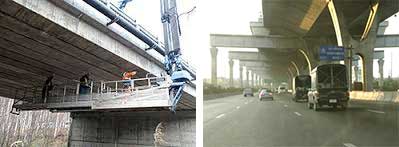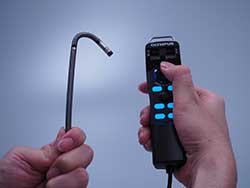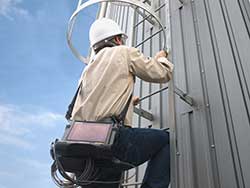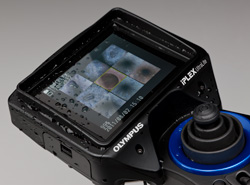
Background
Improvement of infrastructure equipment is a foundational for the maintenance and prosperity of a nation. In addition, equipment that supports physical distribution, such as roads and railways, is important and directly linked to people’s lives.
Bridges are essential for people to efficiently pass through places with drastic changes in elevation, such as mountainous areas crossing over a river. Bridges in old times were suspended by natural materials such as ivy or structured with wood or bricks. They are now structured with various materials such as concrete and steel, and enable people and loads to pass over.
Nowadays, expressways, urban roads, and even railroad tracks are elevated in some cases These can also be structurally considered as forms of bridges.
Problems
In recent years, the number of accidents in which bridges collapse and fall has been on the increase around the world. These accidents vary from fracture due to fatigue caused by repeated use over many years, fracture resulting from load applied in excess of the load limit due to an increase of traffic, and falling during construction due to faulty construction practices.
While there used to be an assumption that infrastructure equipment is maintenance-free, a growing number of countries have started to pursue the establishment of laws concerning maintenance in consideration of the seriousness of such accidents.
In connection with this, inspection techniques, methods, and measures have examined through the establishment of academic or industrial societies and associations.
Measures
The first step to bridge inspection is visually detecting a defect. In the visual inspection, a crack, peeling of the protective layer, rust, or seeping of water occurring in the back of a bridge pier or a subbase is detected. The cause is identified and repair work is performed to restore it to a sound state, leading to an extension of the life of the structure. Of course, there are also other inspection methods in addition to visual inspection. However, visual check is the most basic and definite approach for human judgment.
Challenges and Solutions
An industrial endoscope is very useful as an auxiliary instrument for visual inspection. Regions prone to defects are not necessarily located within eyeshot. They may be present in many inaccessible places such as a joint between a pier and a subbase or the inside of a hollow structural member. All of Olympus’s industrial endoscopes have user friendly functions for enabling the user to observe such inaccessible spaces by producing a bright and easy to see image. The functions available include a robust insertion tube with and end that bends as controlled by the user. The user has a joystick they can use to easily and efficiently bend the end of the insertion tube in order to navigate and search for these defects. Our videoscope series, which have been designed to be small and lightweight for excellent portability, have a number of advantages such as the reduced burden of the worker and adaptability to on-site inspection where the videoscope is used in combination with other equipment. While many advanced features are available, they have also been designed to be able to pick up and used for inspection with minimal training and equipment interference. Olympus videoscopes are designed to assist and improve your inspection, not get in the way of it.
Key Benefits with Olympus
Olympus’s industrial videoscopes used for bridge inspection are available in various types responding to varied inspection applications, with diameters φ4.0mm , φ6.0 mm and lengths 2 to 10 m. Olympus’s industrial videoscopes are used in the field of inspection of bridges around the world thanks to the following excellent functions.
- Battery-powered: the inspector can use it even in a narrow nacelle without worrying about power cable.
- Compact and lightweight design: with excellent mobility, it can be easily carried to a high place.
- Dust-proof and drip-proof performance: also supports an inspection environment in which the region to be inspected is deposited with dust, droplets, etc.
- Various optical adapters: various optical adapters can be selected according to the inspection application.
- The articulation that enables the user to efficiently observe the target region: the lens direction can be appropriately and quickly adjusted using the hand-operating section.
- A highly durable scope insertion part: With a tungsten outer layer the videoscope achieves high robustness to withstand frequent insertion for inspection.
 |  |
| [User comfort IPLEX NX] | |
 |  |
| [Highly mobile IPLEX RX] | |
 |  |
| [IPLEX UltraLite with lightweight design and an all-weather body] | |
Inspection equipment for other than visual inspection
Olympus provides not only industrial endoscopes as visual inspection equipment, but also nondestructive inspection equipment such as UT for internal structures. By combining these, the customer can grasp the state of the structure in more detail, and seek a most appropriate subsequent countermeasure.
Olympus offers a variety of appropriate instruments suitable for such cases, covering extensive works ranging from observation, to recording, and reporting.
Olympus provides a large number of products that ensure good operability and enable the user to obtain clean images by using advanced micro-machine technology that applies medical endoscope technology to the world of industrial inspection.
In addition, our products also utilize our original experience in our digital camera image processing technology.
Contact your local sales representative and ask for a demonstration to see how easily our videoscopes can assist you in assuring the safety usability of our infrastructure is maintained.

